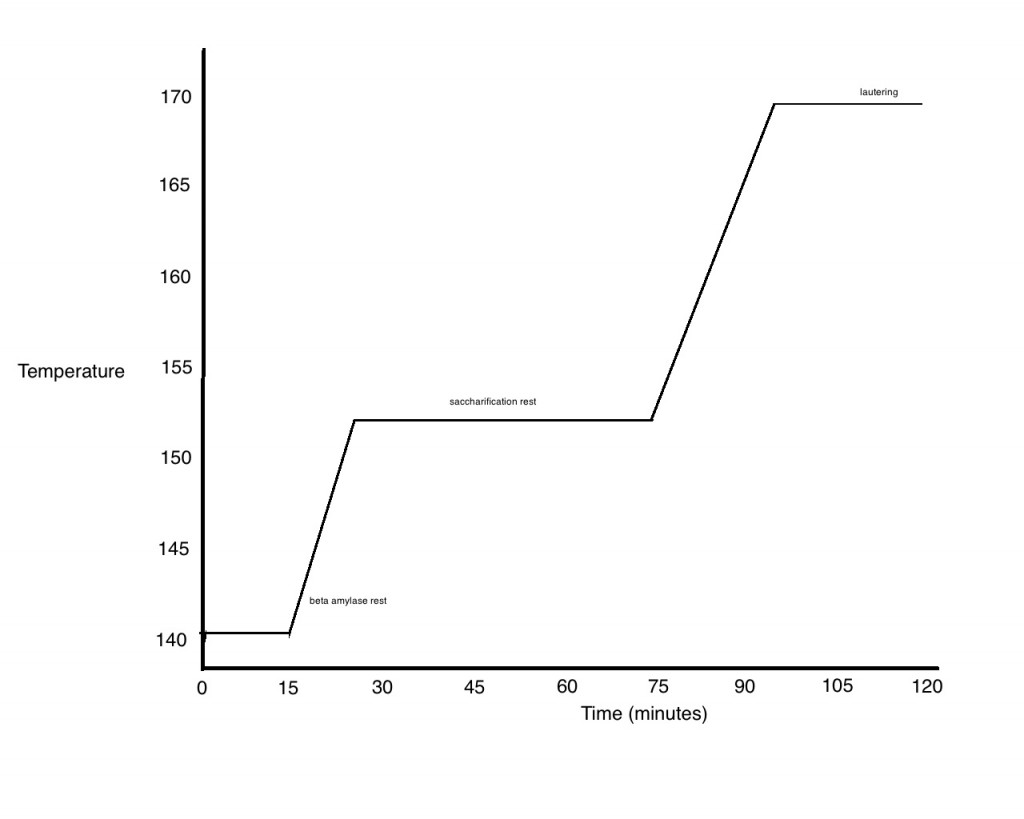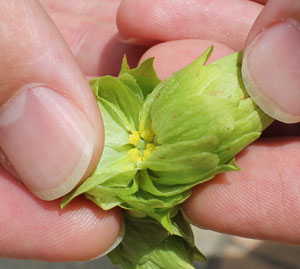 In 2014, James and I posted over 200 articles to Beer and Wine Journal. Here are the top 10 reader favorites. (And below that, just because some articles “have legs,” are the top 10 articles that were posted in 2013, but read in 2014.) Let us know what you’re looking forward to seeing in 2015.
In 2014, James and I posted over 200 articles to Beer and Wine Journal. Here are the top 10 reader favorites. (And below that, just because some articles “have legs,” are the top 10 articles that were posted in 2013, but read in 2014.) Let us know what you’re looking forward to seeing in 2015.
Archives for December 2014
Top 10 Articles of 2014
Top 10 Homebrewing Recipes of 2014
 We post a fair amount of recipes on Beer and Wine Journal. Here are the ten that got the most traffic in 2014.
We post a fair amount of recipes on Beer and Wine Journal. Here are the ten that got the most traffic in 2014.
[Read more…]
10 Advanced Brewing Articles from 2014
 As 2014 draws to a close, here’s a look back at some of the things James and I posted this year. We try to post articles that appeal to every type of homebrewer. This includes articles that are aimed at advanced brewers, including articles that contained information on brewing science or were the results of scientific experiments. Here, in no particular order, are ten “advanced” homebrewing articles from 2014.
As 2014 draws to a close, here’s a look back at some of the things James and I posted this year. We try to post articles that appeal to every type of homebrewer. This includes articles that are aimed at advanced brewers, including articles that contained information on brewing science or were the results of scientific experiments. Here, in no particular order, are ten “advanced” homebrewing articles from 2014.
Texas Two Step Double IPA
Brewing bitter extract beer can be tough. As I have described before, there are two reasons why extract beers tend to be less bitter than comparable all-grain brews. The first is that hop utilization is lowered if a high-gravity wort is boiled. (Adding your extract late minimizes this problem.)
The second problem is the dilution factor. If you want to make 5.0 gallons of double IPA at 80 IBUs, but you’re only yielding 2.5 gallons of wort from your brewpot, that wort would need to be 160 IBUs. This is higher than can be achieved through boiling hops. The only cure for the dilution factor is to boil your full wort volume. Either you need a kettle big enough to hold the full wort, plus about 20% more volume to handle the foaming — and a heat source capable of bringing this volume to a rolling boil — or you need to split the wort into multiple batches.
Several years ago, I tested a method for brewing very bitter extract beer on my stovetop. I called the method The Texas Two Step because I made roughly half of the wort one day, then the remaining wort the next. By breaking up wort production into two steps, I could boil each step at working strength, therefore getting the most from my hops. In addition, since I didn’t need to make a yeast starter for the first volume of beer, I recouped some of the extra time it takes to takes to brew two 2–3 gallon batches over two evenings versus one 5.0-gallon batch in a single evening. [Read more…]
Fortified Winter Warmer (3-gallon/11-L partial mash version)
 Winter isn’t over yet, and winter warmers can — and should, if you ask me — be enjoyed throughout the winter, not just over the holidays. Here’s a 3.0-gallon (11-L) partial mash version of my spiced winter ale that could be ready by mid-February if you brew it around the New Year. [The 5.0-gallon (19-L) version was posted earlier.]
Winter isn’t over yet, and winter warmers can — and should, if you ask me — be enjoyed throughout the winter, not just over the holidays. Here’s a 3.0-gallon (11-L) partial mash version of my spiced winter ale that could be ready by mid-February if you brew it around the New Year. [The 5.0-gallon (19-L) version was posted earlier.]
If you make the specified-sized yeast starter, the 8% ABV base beer should ferment and condition in about 6 weeks. Adding the “spice” — the Scandinavian liquor aquavit — bumps the beer up to 9% ABV and adds a hint of the anise-like character of caraway. Because the spicing of aquavit is consistent, you can be assured of hitting a reasonable level of spicing every time. [And since I only like a hint of spice, you can add more aquavit if you’d like more “licorice” character (and alcohol).]
Beer News (Nov 22–Dec 16)
 ‘Tis the season . . . for endless listicles (articles in the form of a list). Here are a few in the endless parade of listicles recommending holiday, winter, Hanukkah, or Christmas beers. From NewsTalk, the Minneapolis Star/Tribune, USA Today, Londonist, and . . . you know what. just Google “Christmas beers” or “winter beers” and click the news button and you’ll find plenty. And speaking of Christmas beers, Anchor is releasing its 40th anniversary Our Special Ale this year. And in non-holiday lists, Thrillist assembled a panel of experts to give their top 10 IPAs.
‘Tis the season . . . for endless listicles (articles in the form of a list). Here are a few in the endless parade of listicles recommending holiday, winter, Hanukkah, or Christmas beers. From NewsTalk, the Minneapolis Star/Tribune, USA Today, Londonist, and . . . you know what. just Google “Christmas beers” or “winter beers” and click the news button and you’ll find plenty. And speaking of Christmas beers, Anchor is releasing its 40th anniversary Our Special Ale this year. And in non-holiday lists, Thrillist assembled a panel of experts to give their top 10 IPAs.
Sour Wort Berliner Weisse
Brewing sour beers can be a risky proposition that requires a lot of patience. The “wild” yeast and bacteria that create the sour, funky flavors we like can invade other non-funky beers if we’re not careful, and it can take time for complex flavors to evolve in the fermenter. However, there is one shortcut to a tart beer that we can take advantage of: pre-boil souring.
I’ve written previously about sour mashing, which is the technique of inoculating a mash with Lactobacillus – a bacteria responsible for souring beers – and allowing the mash to turn tart over a period of time. This method has its drawbacks. It is tricky to keep air away from the mash in the kettle. Oxygen can encourage growth of unwanted microorganisms that can contribute a “dumpster” character to the souring mash and perhaps to the final beer. [Read more…]
Choosing a Mash Method III (Simple Heated Step Mash, Part Two)
This is the second half of an article that was posted yesterday.
After the beta amylase rest (140–145 °F/60–63 °C), and the temperature ramp up into the saccharification range (148–162 °F/64–72 °C), the rest of wort production is almost identical to a single infusion mash. One difference is that you can choose a slightly higher temperature for your main mash rest. If you were brewing a dry beer and using a single infusion mash, you would likely rest in the 148–151 °F (64–66 °C) range. If you were brewing a somewhat drier beer, you could in the 152–154 °F (67–68 °C) range after the beta amylase rest. Because you’ve already rested at lower temperatures (favoring beta amylase), your main rest can be slightly higher, favoring alpha amylase a bit more, comparatively.
Both alpha and beta amylase will be active at both rests, just to varying degrees. In the beta amylase range, the activity of alpha amylase is still substantial (albeit less than it will be at the higher temperature of the saccharification rest). In the saccharification rest, beta amylase activity continues, although it will decline fairly quickly over time. Still — since it has already been working for a period of time at the lower rest — there is less substrate for it to deal with. [Read more…]
Choosing a Mash Method III (Simple Heated Step Mash)

A step mash for brewing a dry beer. A 15-minute rest at 140 °F (60 °C) is followed by heating the mash to a roughly 45-minute rest at 152 °F (64 °C). Finally, the mash is heated to 170 °F (77 °C) for a mash out. (Click to Enlarge.)
Sometimes the simplest approach is the best. When brewing with fully-modified malts — as most malts are these days — a single infusion mash is almost always your best bet. The maltster has taken care of many of the issues (gums, proteins) that would have required a step mash. In most cases, performing a step mash is at best a waste of time. At worst, it can decrease the quality of your foam. And, by varying the mash temperature of your single infusion mash, you can make wort with varying degrees of fermentability. For most styles of beer, this range of fermentability is adequate.
However, there are some times when a step mash is just the thing. If you are brewing with undermodified malt, a step mash is highly recommended. (If you single infusion mash, you may end up with too many proteins in your wort and gums (glucans) may make lautering difficult.) I’ll cover this approach in a later article on decoction mashing (a type of step mashing). [Read more…]
Rauchbier (And Winter Lagering Tips)
Winter is great time for many homebrewers to try brewing a lager. The fundamentals of brewing lager beer do not vary with the seasons. However, for homebrewers without an actively-cooled fermentation chamber, colder outside temperatures may provide a seasonal opportunity.
If you look around your house, you may find places — such as a basement or attic — that are significantly cooler than the rest of the house. Depending on where you live, an unheated garage or outdoor shed may also fall within a usable temperature range for a period of time. [Read more…]





Recent Comments